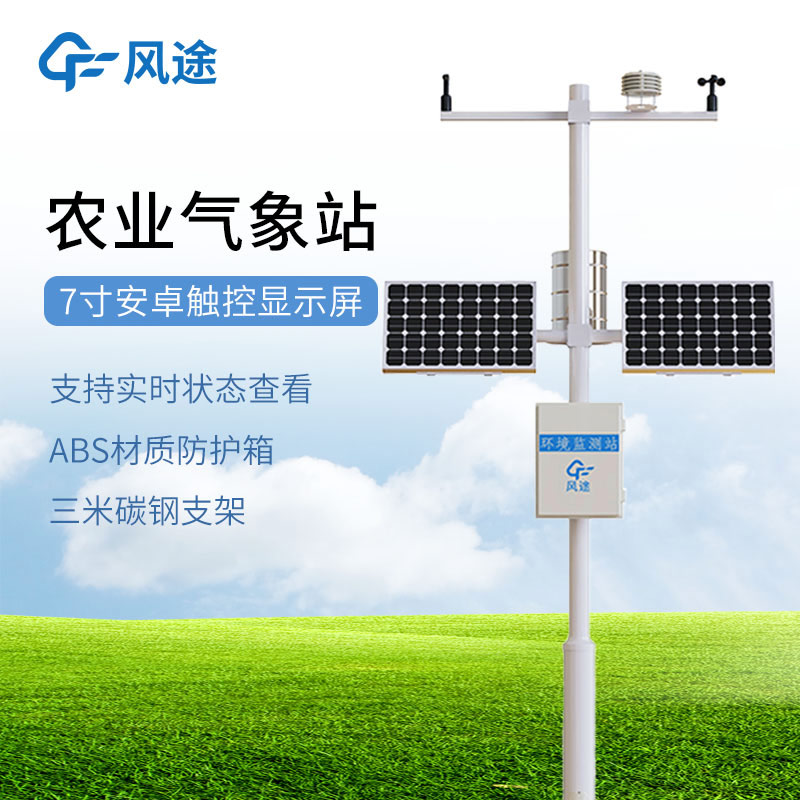Shandong Fengtu IOT Technology Co., Ltd
Sales Manager:Ms. Emily Wang
Cel,Whatsapp,Wechat:+86 15898932201
Email:info@fengtutec.com
Add:No. 155 Optoelectronic Industry Accelerator, Gaoxin District, Weifang, Shandong, China

Sales Manager:Ms. Emily Wang
Cel,Whatsapp,Wechat:+86 15898932201
Email:info@fengtutec.com
Add:No. 155 Optoelectronic Industry Accelerator, Gaoxin District, Weifang, Shandong, China
time:2024-11-12 09:40:23 source:Weather Station viewed:276 time
On the stage of nature, agriculture and meteorology are an inseparable pair of dancing partners. The growth, development, yield, and quality of agricultural crops are all directly affected by the weather. Temperature, light, and moisture, these three meteorological elements, constitute the cornerstone of agricultural production.
Imagine that wheat thrives in the cool northern regions, while rice sways gracefully in the warm southern areas. Their preference for temperature is a direct manifestation of how meteorological conditions affect crop distribution. However, the unpredictability of the weather also brings uncertainties to agricultural production. Cold waves in spring may damage tender buds, heavy rain and high temperatures in summer may destroy crops, early cold in autumn may affect crop pollination, and severe cold in winter may threaten the survival of perennial plants.
Nevertheless, after thousands of years of dealing with agriculture, humans have accumulated much wisdom in coping with meteorological disasters. Especially in modern times, with the accurate forecasts and disaster warnings from meteorological departments, farmers can take preventive measures in advance. Before disasters strike, they can take active actions, such as keeping crops warm, strengthening flood - prevention facilities, and preparing for drought resistance.
In terms of disaster prevention and response, Agricultural Weather Stations can monitor the trends of natural disasters such as frost, drought, and floods, and take measures in advance. Moreover, meteorological elements are related to pests and diseases. Meteorological stations can, in combination with the occurrence patterns of pests and diseases, remind farmers to take preventive measures in advance during weather conditions suitable for the breeding of pests and diseases, thus ensuring the healthy growth of crops.
Determine the best sowing and harvesting times based on information such as temperature and humidity. For example, sowing corn when the soil temperature is appropriate can ensure the germination rate, and harvesting during fine weather can prevent crop damage. Soil moisture data guides irrigation, and meteorological conditions assist in fertilization decisions to avoid fertilizer loss.

Large-field agriculture is a production method that involves crop cultivation on large areas of farmland, mainly including the large-scale planting of food crops, oil crops and cash crops. For example, a large area of the Northeast Plain in China is planted with corn, soybeans and so on. Its product...
The measurement of weather visibility plays a crucial role in many fields such as transportation and meteorological research. Currently, there are mainly two ways to measure visibility, namely manual measurement and equipment measurement. Since manual measurement has relatively large errors and is e...
The marine environment is highly corrosive, far exceeding that of the inland atmospheric environment, posing a severe test to all exposed equipment. Water vapor forms an imperceptible water film on metal surfaces. This water film is not ordinary pure water; it dissolves a large amount of oxygen, chl...
In today's era, there is an increasing focus on the precise monitoring of local microclimates. Whether it is the control of the growth environment of crops in agricultural production, the consideration of regional climate comfort in urban planning, or the exploration of the relationship between...